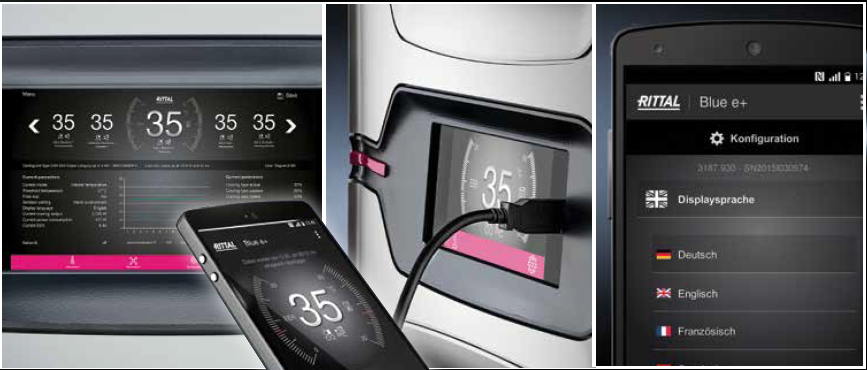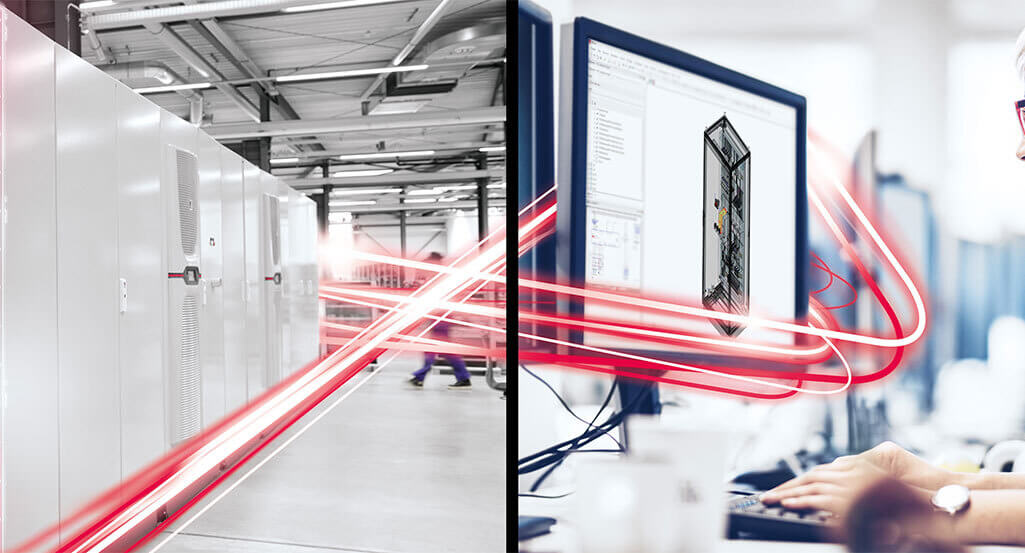
Every manufacturing plant and industrial factory relies on computers and other vital electronics to stay operational. It’s simple – if any of your critical electrical systems fail, your plant can’t keep running, and you stop making money. With downtime easily costing tens of thousands per hour, the cost of failure can add up quickly. That’s why, to keep your electronics safe, you need to house them in industrial-grade enclosures.
However, unlike inside secluded server rooms, enclosures on the factory floor have to face a host of other challenges due to being in the middle of the action. These include:
- Flying dust and particulate
- Splashing liquids and washdowns
- Caustic chemicals
- Workers/machinery bumping into them
Heat Can Kill
In addition to all of the other challenges that enclosures face in manufacturing facilities, heat is the one thing that will almost certainly destroy your electronics if left unchecked. Heat can quickly age your electrical systems, negatively impacting their performance and product life. If it gets hot enough or your systems face prolonged heat pressure, it can cause sudden catastrophic failure, forcing you to shut down operations and delay schedules.
Beyond the worst-case scenario, even just a 10-degree increase in a device’s operating temperature can affect its life expectancy. Other heat-based problems include:
- Catastrophic failure
- Increased downtime
- Real and/or nuisance trip faults
- Voided warranties
It’s not only extreme ambient heat that is a crucial variable in determining what type of climate product you need, but also the heat generated within the enclosure. Through regular operation, the very components that you are trying to protect are usually the primary source of the thermal load. If you follow current trends of packing your enclosure full of controllers, drives, and other electronics, matters will be compounded as higher equipment densities often prevent proper airflow within the enclosure. Failure to mitigate the impact of either internal or external heat sources, and your climate control product will not be able to maintain proper operating temperature ranges.
Solutions and Ratings
With all of the options available to remove heat from the enclosure, it may seem to be a daunting task to pick a solution. Should I use an air conditioner, or can I get away with a filter fan? Choosing which of these options to use should be based on your application and surrounding conditions. For instance, filter fans are best used in relatively clean environments with cool ambient conditions. If you have dirty or oily air, a closed-loop, air-to-air heat exchanger may be a better alternative. On the other hand, if the factory floor has an extremely harsh environment with corrosive airborne substances, then your best bet may be an air-to-water heat exchanger with a chiller.
No matter which device provides the proper cooling capacity, you must also consider what you are protecting your equipment from; Dust, Dirt, Oil, Water, or corrosive elements. You must ensure the solution does not compromise the integrity (rating) of the enclosure.
Enclosures are referred to by the National Electric Manufacturers Association, NEMA, rating based on the type of protection it provides. NEMA 250- Enclosures for Electrical Equipment designates the various requirements and definitions. The primary ratings of enclosures for nonhazardous locations that climate control systems need to maintain are:
- Type 12: Enclosures constructed (without knockouts) for indoor use to provide a degree of protection to personnel against access to hazardous parts; to provide a degree of protection of the equipment inside the enclosure against ingress of solid foreign objects (falling dirt and circulating dust, lint, fibers, and flyings); and to provide a degree of protection with respect to harmful effects on the equipment due to the ingress of water (dripping and light splashing).
- Type 3R: Enclosures constructed for either indoor or outdoor use to provide a degree of protection to personnel against access to hazardous parts; to provide a degree of protection of the equipment inside the enclosure against ingress of solid foreign objects (falling dirt); to provide a degree of protection with respect to harmful effects on the equipment due to the ingress of water (rain, sleet, snow); and that will be undamaged by the external formation of ice on the enclosure.
- Type 4: Enclosures constructed for either indoor or outdoor use to provide a degree of protection to personnel against access to hazardous parts; to provide a degree of protection of the equipment inside the enclosure against ingress of solid foreign objects (falling dirt and windblown dust); to provide a degree of protection with respect to harmful effects on the equipment due to the ingress of water (rain, sleet, snow, splashing water, and hose directed water); and that will be undamaged by the external formation of ice on the enclosure.
- Type 4X: Enclosures constructed for either indoor or outdoor use to provide a degree of protection to personnel against access to hazardous parts; to provide a degree of protection of the equipment inside the enclosure against ingress of solid foreign objects (windblown dust); to provide a degree of protection with respect to harmful effects on the equipment due to the ingress of water (rain, sleet, snow, splashing water, and hose directed water); that provides an additional level of protection against corrosion; and that will be undamaged by the external formation of ice on the enclosure.
NOTE: Climate products do not have a NEMA by themselves, but maintain the rating of the enclosure.
The Rittal Solution
Depending on your heat load, environment, and application, your solution could be the patented Blue e+ line of air conditioners. The Blue e+ line is engineered to provide the highest energy efficiencies, and Blue e+ cooling units feature hybrid cooling technology to handle heat in the harshest environments. These units are easy to install and maintenance-friendly, offering 75 percent greater energy savings than competitive products.
From the Blue e and Blue e+ line of air conditioners to our TopTherm chillers and heat exchangers, Rittal has a way to keep your critical electronics cool in every application. Our advanced climate control solutions ensure optimal operating temperatures are maintained within the enclosures. With our innovative thermal management, you’ll never have to worry again about costly, unplanned downtime from heat-induced, electronic failure.
If you want to learn more about climate control for indoor enclosures, click here to take a look at our climate solutions handbook. Need a quick reference? Take a look at our Climate Control Application Guide.

